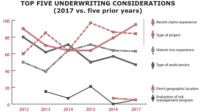Commentary: Contractors Must Fine Tune Their Scope of Services
You wouldn’t go to your dentist for oral surgery without asking exactly what procedures he or she will be performing and what it will cost, would you? But this is exactly the trap that many architectural and engineering consultants fall into—neglecting to provide a specific list of services that they will perform as part of their contract.
Outlining your scope of services is important to helping reduce professional liability and risk as well as boost your bottom line. To avoid surprises, it is important to nail down exactly what you are going to do—including a list of additional services you recommend—and not going to do as part of the overall contract negotiation.
Stop Scope Creep Early
To recognize “scope creep” or work not included in the contract, a good rule of thumb is to provide weekly progress reports showing the client what is being accomplished on a project. Using this tool helps catch this problem early enabling you and your client to go back and add that scope of work as an addendum and agree on an additional fee for the service.
Unfortunately, those consultants who delay remedying the situation find themselves and their clients at odds. Managing a client’s expectations is critical in maintaining a good working relationship over time.
Outlining Your Services
Take time to itemize all of the services required to meet the client’s project objectives. Be specific in what services you will be offering. For example, a design firm might perform an initial architectural rendering to give the client a conceptual idea, but additional documents that require specs on sewer and power lines and other items will be charged separately.
Your goal is to develop a final scope of services that clearly sets forth:
• Services that you will perform for the agreed-to fee
• Additional services you can perform for an additional fee
• Recommended services you will not perform per the client’s refusal
• Required services that will be performed by a third party such as the contractor or subconsultants.
The fourth item—required services performed by others—is often overlooked but very important to spell out. As the prime consultant on a project, you can be liable for failing to ensure a required service was performed up to standard, even if you were not contracted to provide that service directly. This is true even if the third party performing the services enters into a contract directly with the client.
A Sample of Services
A useful tool to reach agreement on a reasonable scope of services is a checklist. You can use the basic services listed in the standard American Institute of Architects or Engineers Joint Contract Documents Committee (EJCDC) agreement as a starting point and then customize it to fit your own practice. Services can be listed by project phase.
For example, an architect might categorize services as pre-design, schematic design, design development, construction documents, bidding/negotiation, construction-phase/observation and post-construction. The following checklist is adapted from the Coalition of American Structural Engineers:




